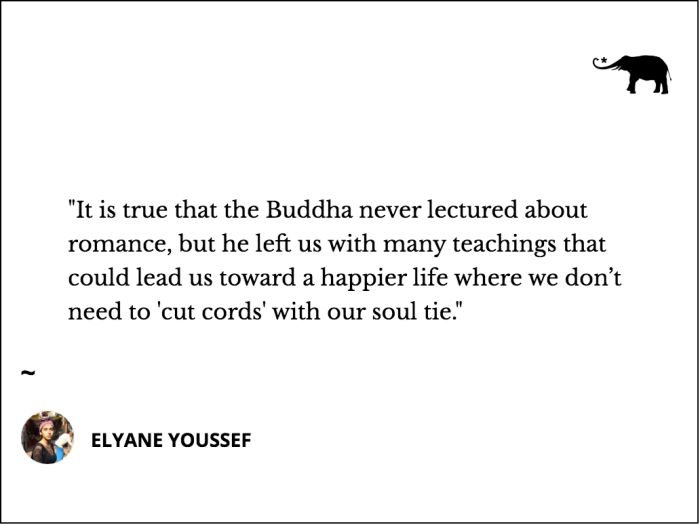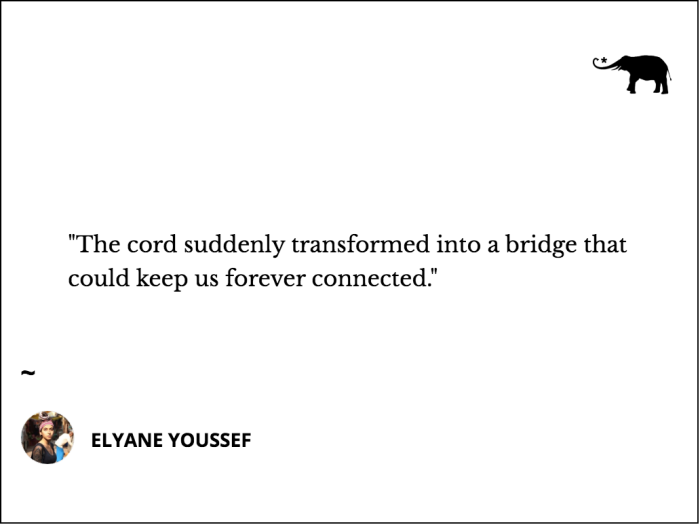View this post on Instagram
“If you cannot transform and take care of the suffering in you and in the other person, that is not true love.” ~ Thich Nhat Hanh
I’m not a fan of labels.
Words and definitions are man-made but certainly needed. At the end of the day, how can we define what we feel and experience if we don’t put it into words?
When it comes to romance, we have invented thousands of words. Soul mates, twin flames, partners, second half, better half, husband, wife, significant other, spouse, companion—the list is endless.
We desperately want a few letters to explain the unexplainable: love.
We feel it, live it, express it, yet we can never fully grasp it. And to make matters worse, we invented an even harder description: soul ties.
As I said earlier, I’m not a fan of labels, but if I’m being honest, I think we need these four-letter words.
According to Merriam-Webster, tie has six definitions.
Here are four of them:
>> a line, ribbon, or cord used for uniting
>> something that serves as a connecting link
>> a method or style of tying or knotting
>> something that is knotted
Imagine these definitions being integrated into our unexplainable experience of love. Two persons are united. There’s a connecting link between the two. They’re tied together. Their connection is knotted—entangled.
I personally love this, and as much as I try to stay away from labels, I can’t escape the experience of soul ties.
We’ve all been there—maybe once, maybe more. We’ve all met someone who feels familiar, like we’ve known them our whole life. Looking into their eyes feels like home. Time stops when we hug, speak, or touch.
The mere thought of them could make us cry—even sob.
Whether we’re together or apart, they give rise to the same old emotions, over and over and over again. We feel like we’re forever connected, like nothing could ever cut this cord that joins us.
The relationship might be physical, emotional, or purely mental. It could be healthy or destructive. Whatever it is, there’s an undeniable feeling of returning home, of deep spirituality, of deep presence.
It’s a deep connection, an eternal bond.
It’s a soul tie.
It’s a link that doesn’t necessarily end when or if the relationship does.
Many years ago, when I was in the midst of an unbreakable soul tie with someone, I raised my hand in the “Introduction to Buddhism” course in India when our teacher encouraged us to ask questions.
“What do you think about romantic love/marriage?”
I still vividly remember the Tibetan monk (our teacher) bursting into laughter and replying with his broken English, “Sorry, don’t know about ‘romantic love.’ I know love.”
At first, I felt disappointed. He’s a Buddhist monk. He’s supposed to know everything, right? Well, it took me a few hours to understand what he was trying to tell me.
In Buddhism, we won’t find anything about marriage or romantic relationships or soul ties in the Sutras. The oral teachings of Gautama Buddha are detailed, well-versed, and full of wisdom. But the Buddha didn’t speak about romantic love. Do you know why? Because as my teacher implied, the Buddha spoke of love. Pure, universal love.
So what does any of this have to do with soul ties? Is Buddhism really that shallow? How could it not approve romance and what are we getting wrong about it?
It is true that the Buddha never lectured about romance, but he left us with many teachings that could lead us toward a happier life where we don’t need to “cut cords” with our soul tie.
If you are in a healthy relationship with your soul tie, that’s great. But for those who have been struggling to let go of a soul tie, the Buddha’s teachings can be liberating and assuring.
I’m glad that I had the time (and desire) to dig deeper into Buddhism and link the teachings to romantic love.
According to Buddhism, we are kinda stuck in an endless cycle called saṃsāra (the repeated cycles of birth, life, death, and rebirth). Through karma (deeds or actions) and enlightenment, we can put an end to our suffering and achieve nirvana (the release from worldly suffering).
That said, the ultimate purpose of life in Buddhism is to end our suffering by practicing the Noble Eightfold Path.
Now let’s incorporate this idea into soul tie relationships. I don’t know about your own experience, but mine was rough. The person with whom I had a strong, deep connection was never mine. Our situationship extended over many years, eventually causing me angst and profound emotional suffering.
If my purpose in this life is to terminate my duḥkha (suffering), why was I holding on so deeply to that person? Why was I never able to “cut cords” and move on?
The Buddha’s teachings inspired me to look at that relationship as purposeful. The way I see it, it played an essential part in my mental and emotional suffering, and I was the only one who could terminate it.
But I didn’t want to end my pain. I was addicted to pain, to missing him, to wanting him, to never really having him. In my mind, there was only one way: us being together. There was no room in my mind and heart for another scenario. It was either us together, or nothing at all.
Regardless of the jubilant emotions that roamed around my body with that person, Buddhism helped me realize that I was the only one responsible for the continuity of my pain. As many Buddhist teachings imply, if something doesn’t bring us happiness, it isn’t true love.
For love to exist, it should be crowned by maitrī (loving-kindness). In most soul tie relationships, we think that their essence is based on emotions, eternal moments, and unbreakable vows. But how do we call it true love if it makes us suffer?
That said, it is up to us to transform our suffering into maitrī or karuṇā (compassion). To do this, we must leave behind the idea of “romantic love” and step into a more promising one: pure, compassionate, universal love.
This sounds beautiful, I know. But I also know how challenging it can be. I know how devastating it is to stop tuning in to our hopes and emotional needs and cultivate love that’s not possessive, demanding, or judgmental.
Before we “cut cords,” we must practice forgiveness, loving-kindness, and compassion. We must accept that our soul tie relationship might have a bigger purpose: one that teaches us about pain, shows us the origin of pain, confirms the possibility of eliminating pain, and overcoming pain.
This is the heart of Buddhism: The Four Noble Truths.
1. The truth of suffering
2. The truth of the cause of suffering
3. The truth of the end of suffering
4. The truth of the path that leads to the end of suffering
When we do this, the cords will automatically be cut. When we have the capacity in our hearts to offer (and wish) our soul tie happiness, we automatically step out of suffering. We instinctively transform our relationship from a destructive one to one of a higher purpose.
Realizing this truth, unexpectedly, there was a new scenario in my mind. There was an alternative that didn’t necessarily mean we needed to be together physically. There was maitrī. There was an infinite well of love inside me that was ready to keep loving that person but without confines or constraints or rules.
The cord suddenly transformed into a bridge that could keep us forever connected. Buddhists believe that when we’re reborn, we carry our relationships from one lifetime to the next. This is the essence of a soul tie relationship: an eternal connection with a higher purpose.
To transform unhealthy cords into timeless bridges, ask yourself these questions:
>> What am I expecting from this relationship?
>> What’s the cause of my emotional turmoil?
>> Can I send this person unconditional forgiveness and compassion?
>> Do I understand that suffering is the opposite of love?
>> Do I understand that romantic love is also pure love?
>> Am I ready to step away from my ego and closer into genuine spirituality?
~
 Share on bsky
Share on bsky







Read 7 comments and reply